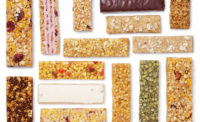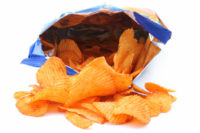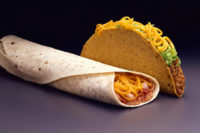There's no need for a mixer or food processor. Keep the fridge for drinks and maybe the blender. Eating has never been easier. Why? Bars, bars and more bars. Vegan, chocolate, gluten-free, low-glycemic, raw, sugar-free, nutty, crunchy, gooey, for kids, for weightlifters, familiar old granola bars. Packed with protein, fiber, superfruits—even some with sugar and fat. Bars for pregnant women, and the Yaff Bar that's for you and your mutt to share. Lärabar's Alt gets its protein from peas; another company even harvests crickets for protein. Huge?
About a fifth of Americans will eat a bar today, says Harry Balzer, chief food industry analyst for research firm, The NPD Group. (The only bigger change in our eating habits over the last decade? The explosion of yogurt.)
The market research firm Packaged Facts notes in an April 2012 report that the bar business approached $5.7 billion in 2011 and is still growing. "They're their own food group," says Terry Walters, a cookbook author and natural foods advocate.
What's more, bars are wrapped in the cachet of something that's good for you—and many of them are fine nutritionally, even though most bars have opaque packaging, making them hard to judge.
And energy bars sound pretty healthful, right? But the truth is that that just means they have calories. So before you load up for the weekend, read the label. Easy doesn't necessarily mean healthful.
In many cases, Walters says, bars are fast food and not so different from the drive-through. What they can do is fit in a pocket or purse and last for a long time in the glove compartment. Long-distance runners can eat them on the course, and busy travelers can make a meal of them on the plane or subway.
The popularity of bars “is a perfect reflection of where we are culturally,” says Mollie Katzen, who has been writing cookbooks since the counterculture days. Her latest, “The Heart of the Plate: Vegetarian Recipes for a New Generation,” came out this fall.
Bar makers are slicing the market to attract very specific customers: Dieters on Medifast; the socially responsible with This Bar Saves Lives (which donates to abate hunger); or athletes with Builder's Max bar, which has 30 g. of protein, made by the 20-year-old company Clif Bar & Co.
Many consumers are looking for protein sources that are cheaper than meat, so that's one draw, but bars are not necessarily cheap; they can top $5. But many people are willing to sacrifice a meal by substituting a bar. “By [bars’] nature, you make certain compromises from a nutritional standpoint,” says David Heber, director of the UCLA Center for Human Nutrition. But sometimes, “that's your best choice. If there's nothing but fast food around, it could be a good thing to have.”
Source: www.latimes.com




